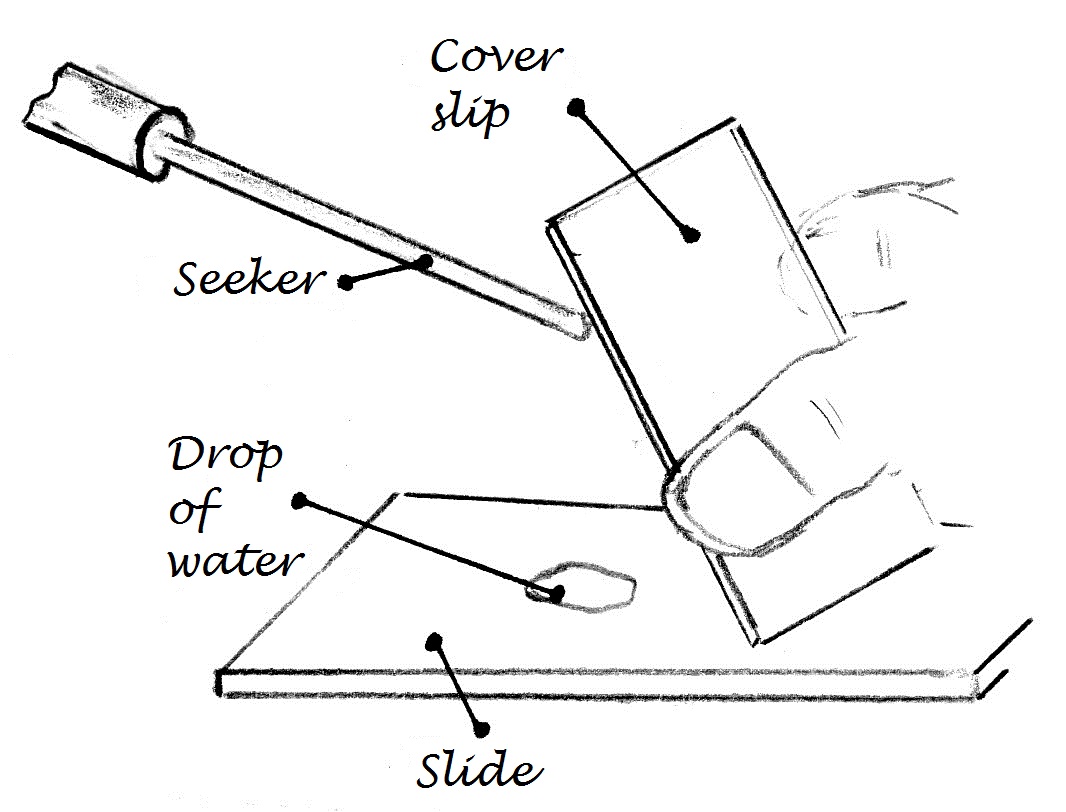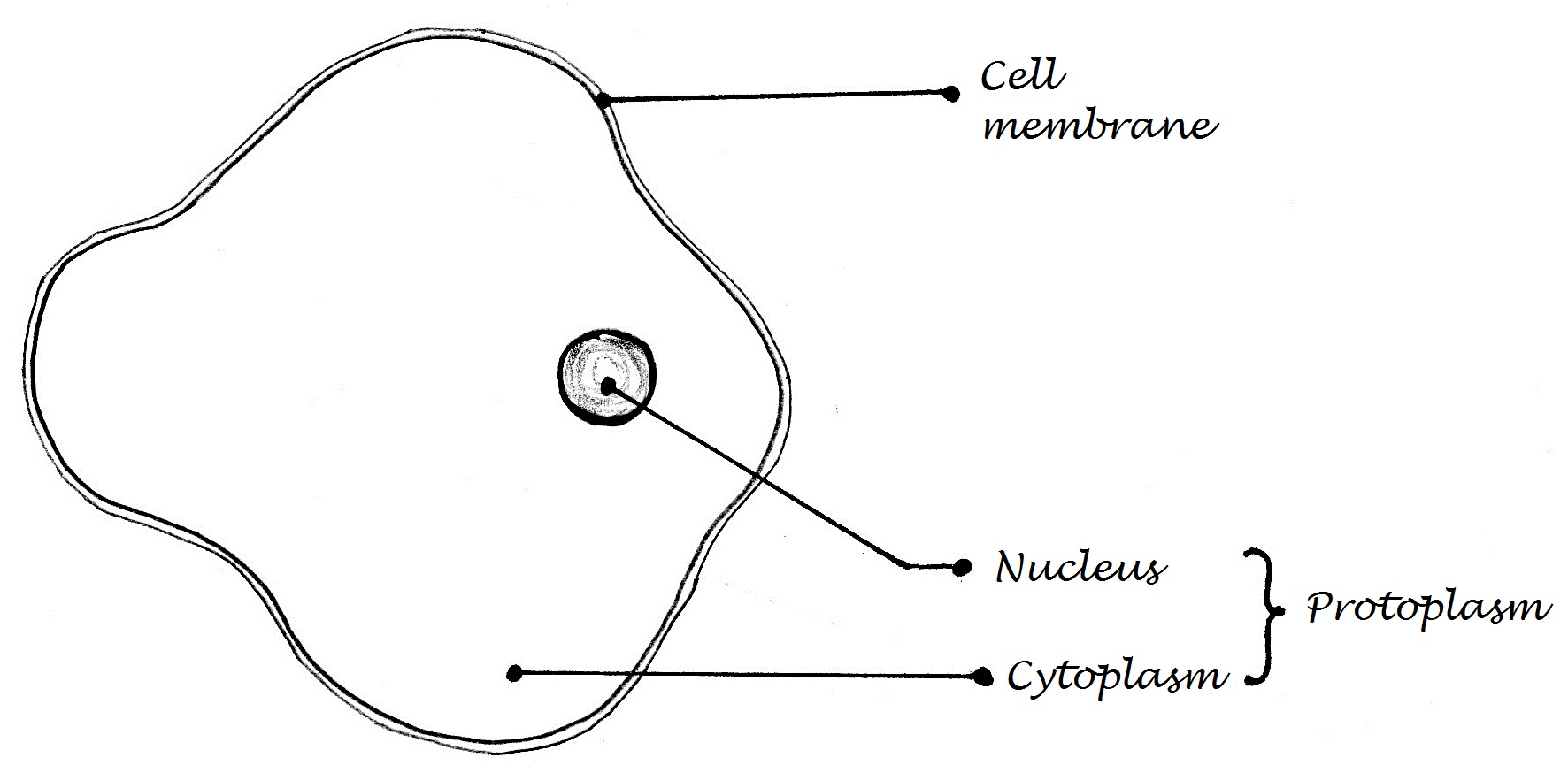Question
- Leaving Cert. Biology (Higher) 2014: Q8
- Back to the question >
Answer
(a)
(i) The coarse focus wheel adjusts the objective lens roughly.
(ii)
Magnification is 10 x 40 = 400
Diameter = 0.8mm under microscope
= 0.8/400 = 0.002mm
(b)
(i) Rinse your mouth with water. Using a clean spatula, gently scrape along the inside of your cheek. Spread the cells on a clean glass slide.
(ii) Methylene blue
(iii) Place one end of the coverslip down at an angle. Then using a mounted needle, gently lower the other end, forcing the air bubbles out as the cover is lowered.

(iv) A coverslip is used to protect the specimen.
(v)
(vi)

(i) The coarse focus wheel adjusts the objective lens roughly.
(ii)
Magnification is 10 x 40 = 400
Diameter = 0.8mm under microscope
= 0.8/400 = 0.002mm
(b)
(i) Rinse your mouth with water. Using a clean spatula, gently scrape along the inside of your cheek. Spread the cells on a clean glass slide.
(ii) Methylene blue
(iii) Place one end of the coverslip down at an angle. Then using a mounted needle, gently lower the other end, forcing the air bubbles out as the cover is lowered.

(iv) A coverslip is used to protect the specimen.
(v)
- Place the slide on the stage.
- Using the coarse adjustment, bring the lowest power lens as close as possible to the slide without touching.
- Then while looking in the eyepiece lens, use the coarse focus knob to raise the objective lens and bring the slide into focus.
- Once in focus you can use the fine focus knob to sharpen the image.
- Change the objective lens and use the fine focus adjustment to get the best picture.
(vi)

